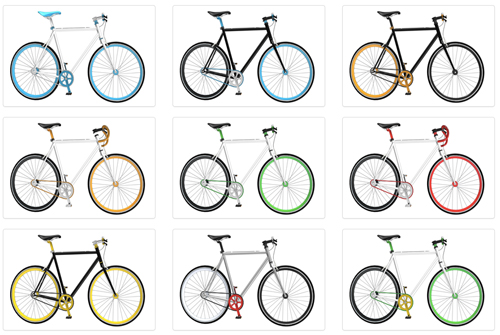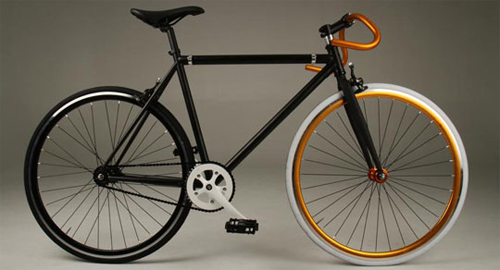By JOHN PEACOCK
A nationwide craze for singlespeed and fixed-gear urban bikes has spawned dozens of companies catering to the demand. Online, several “custom fixie” shops offer interactive build-a-bike programs where buyers click and pick frame color, components, and other features to make a unique, custom ride.
We went through this process last month on Aviciibikes.com, a California company that sells good-looking urban bikes at $399 a pop. Not a bad price, we thought. While, at least until the rig arrived in our office.

In truth, the Avicii bike is not bad — it was just a bit underwhelming. $399 is not a horrible price, but there are other considerations, including shipping costs, potential tax, and bike-assembly costs at your local shop if you’re not comfortable doing it yourself.
Our bike did not come with tape on the handlebars either. This is a minor thing, but it adds cost to a bike that may have at first seemed a screaming deal. After all the extras, a bike from Avicii could easily set you back $500 or more.
At that price, we feel going with a local bike shop might net a better bike. But regardless, as we said, the Avicii is not a bad choice, just perhaps not the best decision if you have the time to look around and talk with local bike shop workers.
Its aesthetic is cool, that is undeniable. Avicii lets you pick between frame colors, rim and saddle color, among other custom options. The company offers a frame in just three sizes (52, 56, and 60cm). You can customize the color of the frame and the majority of the components (saddle, rims, pedals, handlebars, chain, chainring).

There is a visual walkthrough onscreen of the bike you are creating. With this tool, you choose colors for each part and virtually assemble your bike. You can create a sleek-looking urban bike in minutes. For people who might see a bike at least partly as a fashion accessory, the Avicii method will be applauded.
But bike geeks will be let down by the overall quality of the build. The frame is made with a heavy steel tubing, the same kind used on cheap “department store bikes,” according to our bike reporter T.C. Worley.
The mediocre frame material results in a heavy bike. Ours weighed about 27 pounds — super chunky for such a pared-down ride. Another fixed-gear bike in our office, from Wabi, for comparison weighs only 16 pounds (but costs around $1,000).
Components are generic and of mediocre quality from Avicii. A rear “flip-flop” hub allows the rider to choose whether they want to ride it as a fixed-gear or a single speed with a freewheel. I chose to ride it with the freewheel so I cannot attest to the long-term reliability of the fixed hub. (Many low-quality hubs used fixed have a short lifespan, Worley noted.)
Beyond talking about parts, the Avicii bike rode fine. Overall, it is comfortable. The seat and frame fit me well.
Comparing the Avicii bike to my usual singlespeed, a Kona Paddy Wagon, the two bikes have a similar fit and differ only in minor ways during a ride. The Kona, which costs a couple hundred dollars more than the Avicii, feels more solid and has better components. It’s a few pounds lighter, too.
Overall, if you are going for a mid-range priced bike like the Avicii, there are cheaper options out there (often “custom” builds at a local bike shop) or also higher quality bikes for just a bit more money (like the Kona).

If aesthetics play a heavy part in your decision, you won’t be disappointed by the bikes that Avicii offers. I’ve rarely had anyone comment on my Kona while out riding, but in the four weeks that I rode the Avicii I can recall a few times when people threw out a “nice bike” comment at the stoplight as I waited for the signal to change on a bike I “designed” online all by myself.
—John Peacock is a founder at GearJunkie.com.






